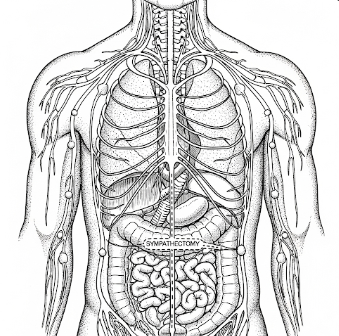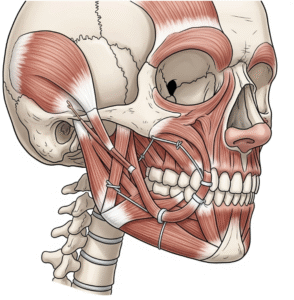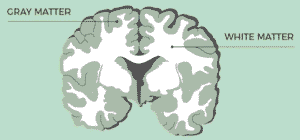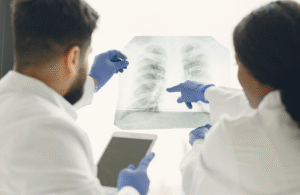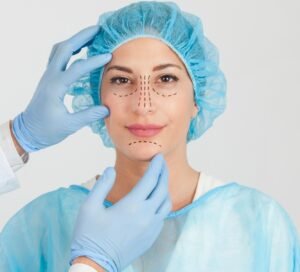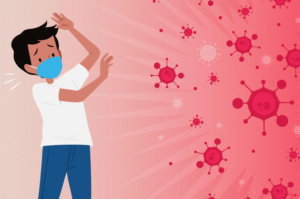Overview
Sympathectomy is a surgical procedure that involves cutting, clipping, or otherwise interrupting portions of the sympathetic nervous system to treat conditions caused by overactive nerve signals. It is commonly used for hyperhidrosis (excessive sweating), Raynaud’s disease, certain chronic pain conditions, and severe peripheral vascular disorders.
In Korea, sympathectomy is performed in highly advanced thoracic surgery and neurosurgery centers, offering minimally invasive endoscopic techniques, precise nerve targeting, and comprehensive post-operative care. Patients from around the world choose Korea for sympathectomy because of high success rates, low complication rates, and advanced recovery protocols.
What is Sympathectomy?
Sympathectomy is a surgical intervention targeting the sympathetic nervous system, a network of nerves that control involuntary body functions such as sweating, blood vessel constriction, and heart rate.
Types of sympathectomy include:
- ✦ Thoracic sympathectomy – targets nerves in the chest to treat palmar hyperhidrosis (hand sweating).
- ➤ Lumbar sympathectomy – targets nerves in the lower back for foot hyperhidrosis or vascular issues.
- ✦ Endoscopic sympathectomy – minimally invasive procedure using small incisions and cameras.
- ➤ Clipping vs. cutting – nerves may be clipped temporarily or permanently severed depending on the condition.
The goal is to reduce overactive nerve signaling while minimizing impact on normal body functions.
What are the Benefits?
Sympathectomy offers multiple advantages depending on the indication:
✅ Relief from excessive sweating (hands, feet, armpits).
➤ Improvement in circulation for conditions like Raynaud’s disease.
✦ Reduction in chronic pain caused by nerve overactivity.
➤ Minimally invasive techniques – faster recovery and smaller scars.
✅ High success rates for severe hyperhidrosis and vascular disorders.
✦ Enhanced quality of life – improved social confidence, comfort, and daily functioning.
Procedure Details
1) How should I prepare for Sympathectomy?
Preparation steps include:
- ✦ Medical evaluation – imaging, blood tests, and assessment of cardiovascular and pulmonary status.
- ➤ Medication adjustments – discontinuation of blood thinners or other medications affecting nerves or bleeding.
- ✦ Discussion with surgeon – procedure type, expected outcomes, risks, and recovery plan.
- ➤ Fasting – usually 6–8 hours before surgery.
- ✦ Pre-anesthesia assessment – particularly important for thoracic procedures.
- ➤ Lifestyle modifications – stop smoking and follow breathing exercises if needed for thoracic sympathectomy.
2) What happens during the procedure Sympathectomy?
Sympathectomy is generally performed under general anesthesia and takes 1–2 hours depending on the type:
➤ Step 1: Small incisions are made for thoracoscopic or laparoscopic access to the sympathetic chain.
✦ Step 2: A camera and specialized instruments are inserted to visualize the nerve chain.
➤ Step 3: Targeted sympathetic nerves are cut, clipped, or cauterized.
✦ Step 4: Hemostasis is ensured, and the surgical area is inspected for complications.
➤ Step 5: Incisions are closed, and a drain may be placed temporarily.
Endoscopic approaches minimize tissue trauma, shorten hospital stay, and reduce post-operative pain.
3) What happens after a Sympathectomy?
Post-operative care involves:
- ✦ Short hospital stay – usually 1–2 days.
- ➤ Pain management – mild discomfort controlled with medication.
- ✦ Observation for complications – including pneumothorax (air in the chest), infection, or nerve-related issues.
- ➤ Gradual return to normal activity – light activities in 1–2 weeks, full activity in 4–6 weeks.
- ✦ Follow-up visits – monitor for compensatory sweating, nerve function, and overall satisfaction.
- ➤ Lifestyle adjustments – temporary avoidance of strenuous activities until cleared by the surgeon.
Most patients experience immediate relief from primary symptoms like excessive sweating or pain, with continued improvement over weeks.
Risks / Benefits
Potential Risks:
- ✦ Compensatory sweating in other areas (most common).
- ➤ Pneumothorax (air leakage in chest) in thoracic procedures.
- ✦ Nerve injury or temporary numbness.
- ➤ Infection at incision sites.
- ✦ Rare complications: Horner’s syndrome (drooping eyelid, small pupil) if upper thoracic nerves are affected.
Benefits:
- ✅ Effective and long-lasting relief from hyperhidrosis.
- ✅ Improvement in circulation for vascular conditions.
- ✅ Reduces chronic pain related to nerve overactivity.
- ✅ Minimally invasive with quick recovery and short hospital stay.
Recovery and Outlook
Recovery depends on procedure type and patient condition:
- ➤ Hospital stay: 1–2 days for observation.
- ✦ Pain and mobility: mild discomfort and limited activity initially.
- ➤ Return to daily activities: 1–2 weeks.
- ✦ Full recovery: 4–6 weeks.
- ➤ Long-term outlook: Excellent symptom control and improved quality of life.
Compensatory sweating may occur but is usually mild and manageable with lifestyle adjustments.
When To Call the Doctor
Patients should contact their healthcare provider if they notice:
⚠ Severe or persistent pain at incision site.
⚠ Shortness of breath, chest pain, or swelling.
⚠ Excessive compensatory sweating affecting daily life.
⚠ Numbness, weakness, or signs of nerve injury.
⚠ Fever, chills, or signs of infection.
Best Korea Option / Process
Korea provides world-class sympathectomy care with:
- ✦ Experienced thoracic and neurosurgeons specializing in minimally invasive procedures.
- ➤ Advanced endoscopic and laparoscopic equipment for precise nerve targeting.
- ✦ Multidisciplinary care teams for pre- and post-operative support.
- ➤ Short hospital stay and rapid recovery protocols.
- ✦ Affordable treatment packages for international patients.
- ➤ Comprehensive post-operative follow-up including management of compensatory sweating and nerve function.
Korea is an excellent destination for safe, effective sympathectomy with high patient satisfaction and excellent outcomes.
Highlights of Sympathectomy in Korea
- ✅ Treats hyperhidrosis, vascular, and chronic pain conditions effectively.
- ➤ Minimally invasive thoracoscopic or laparoscopic techniques.
- ✦ High success rates with rapid recovery.
- ➤ Performed by leading Korean surgeons and multidisciplinary teams.
- ✅ Comprehensive post-operative care and follow-up.

